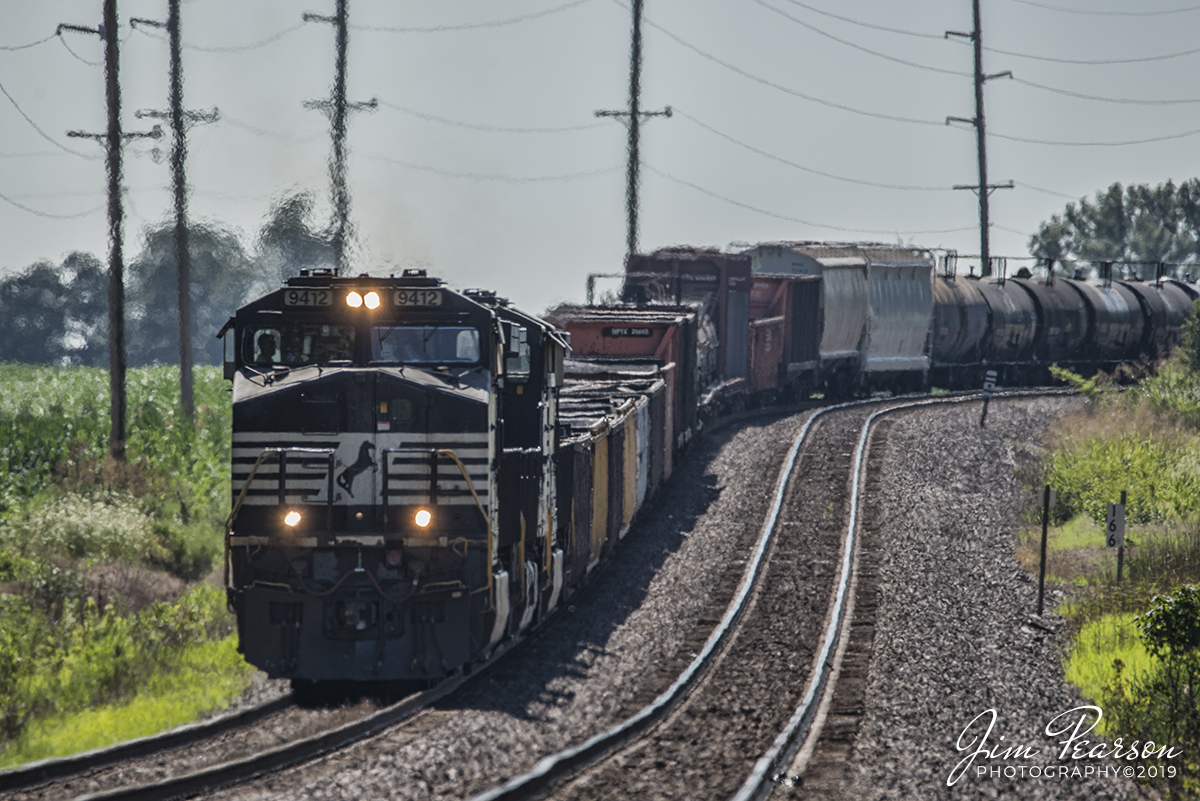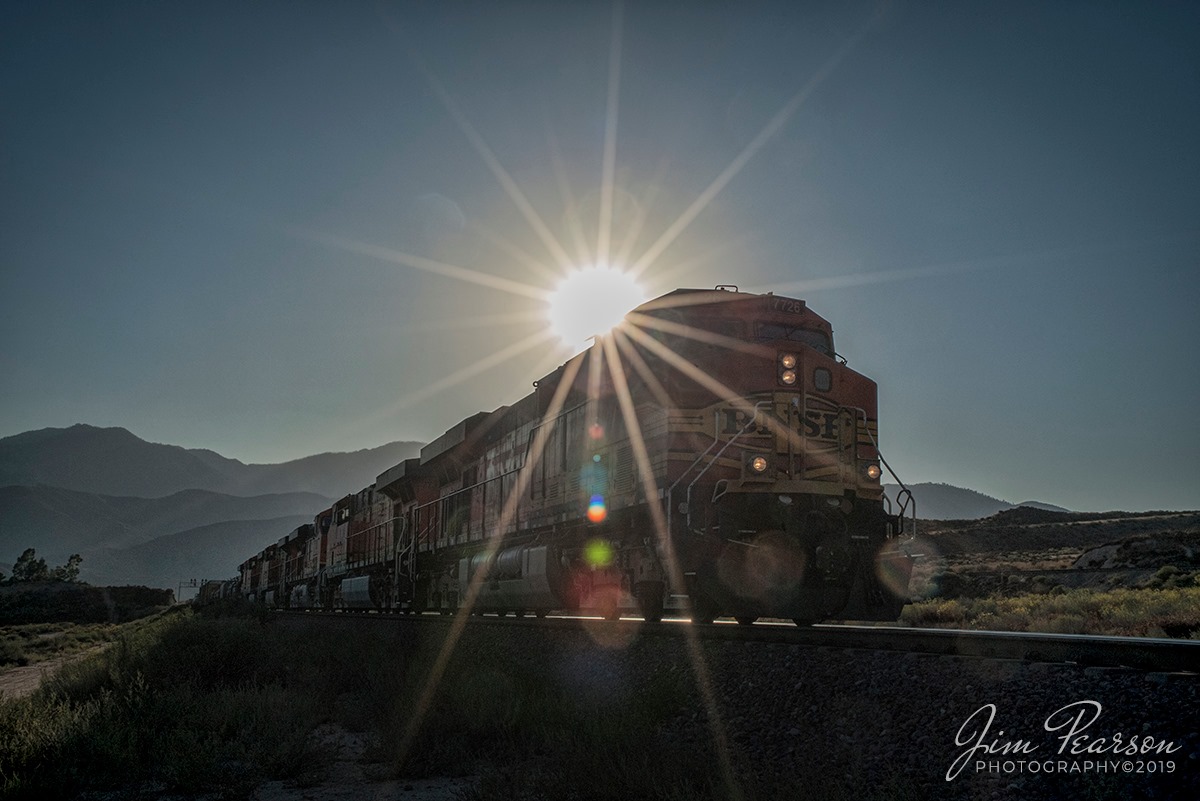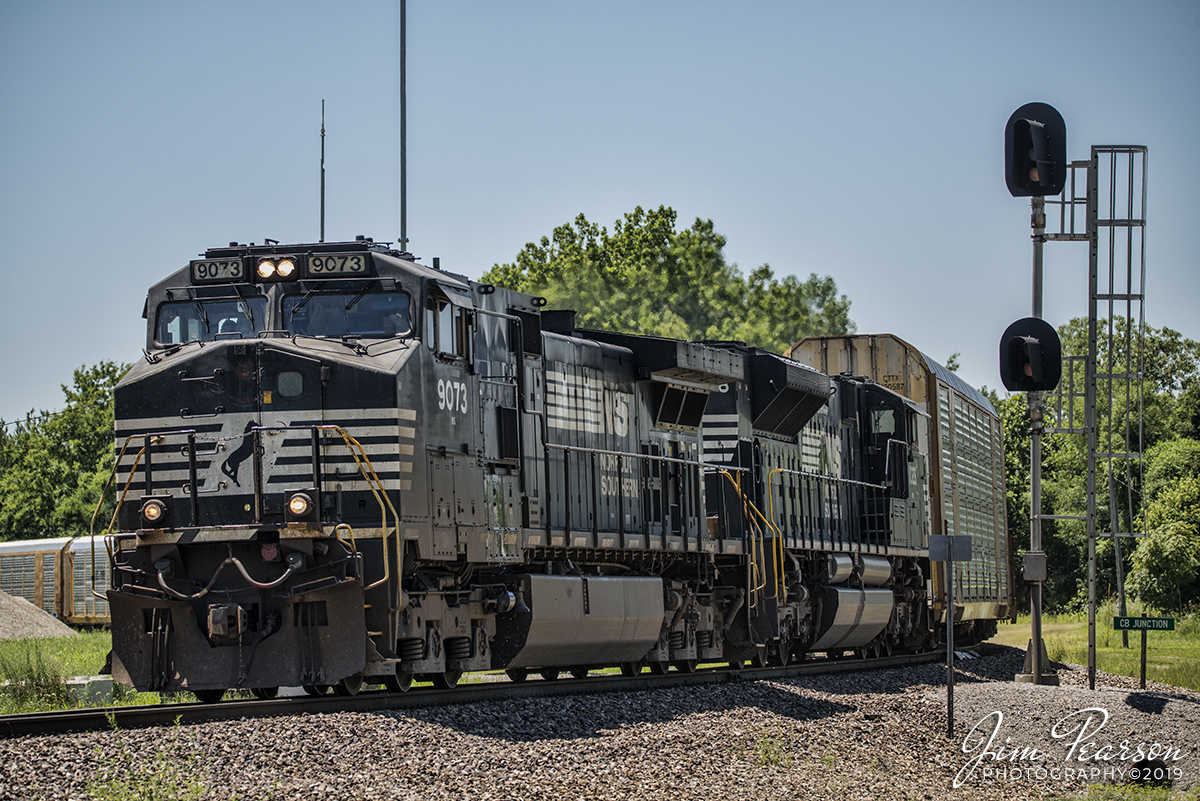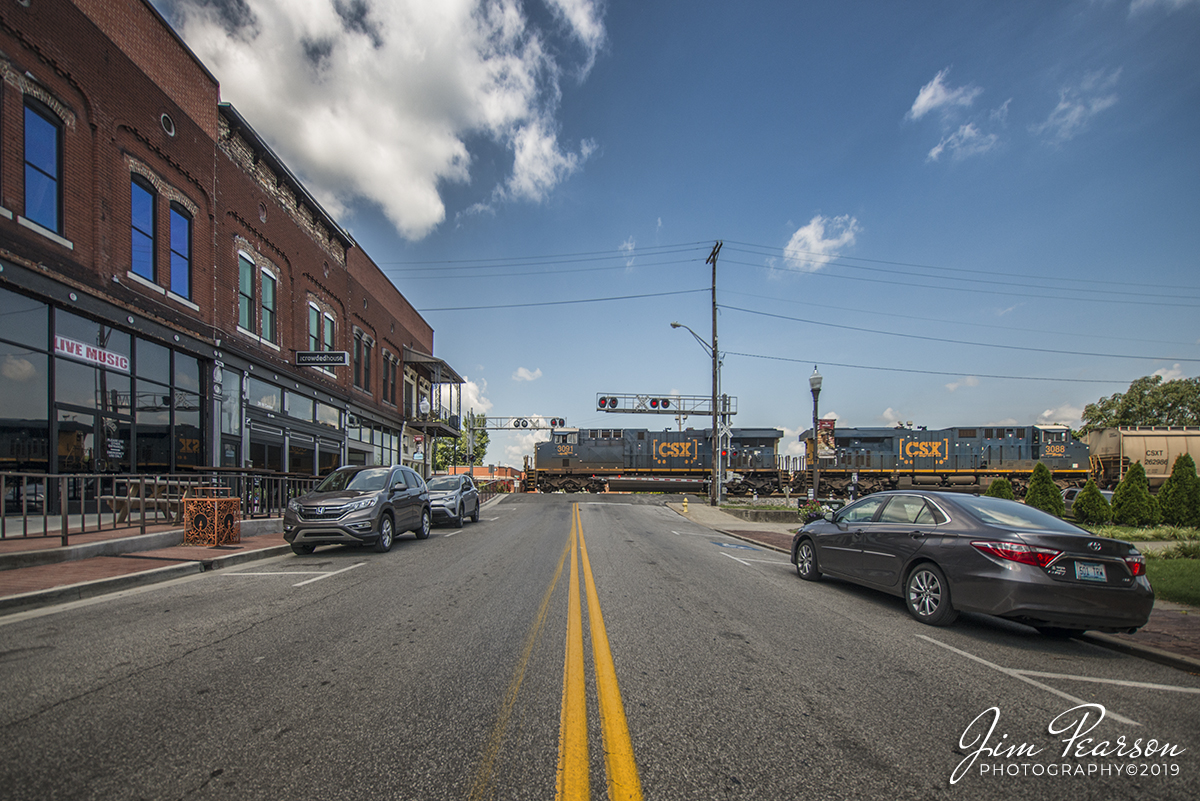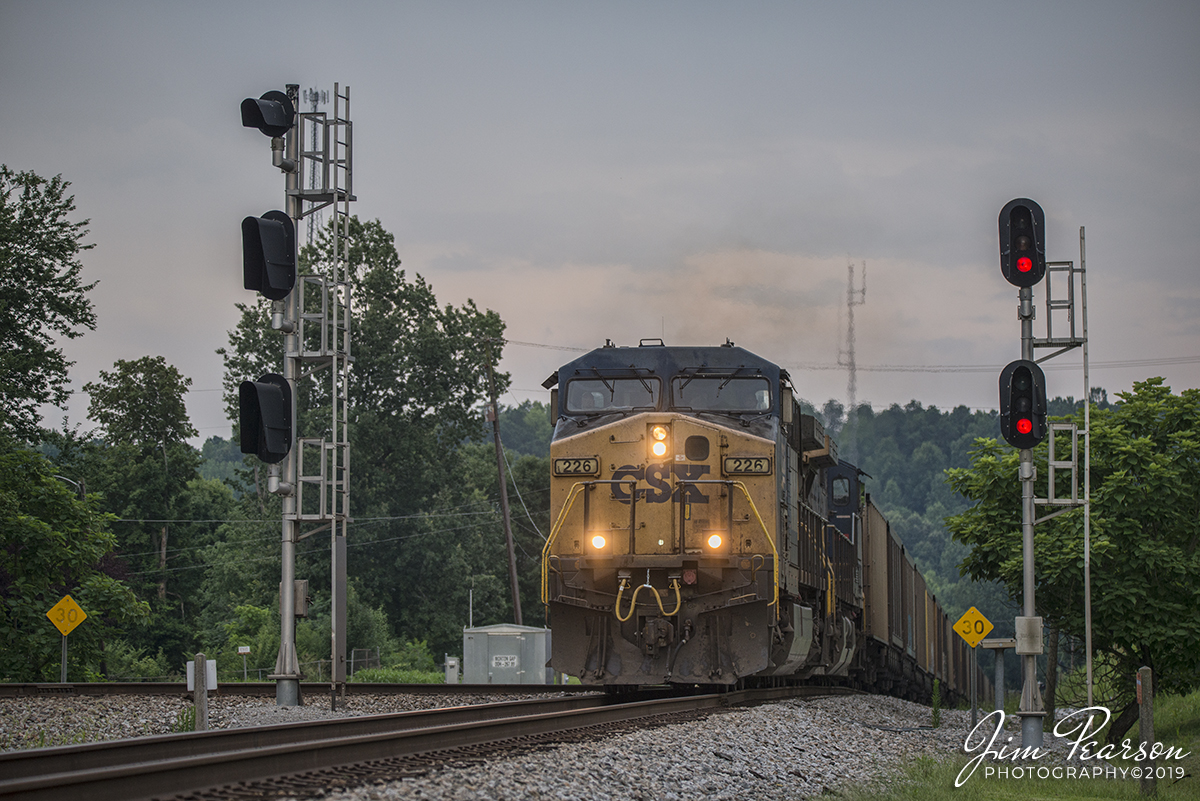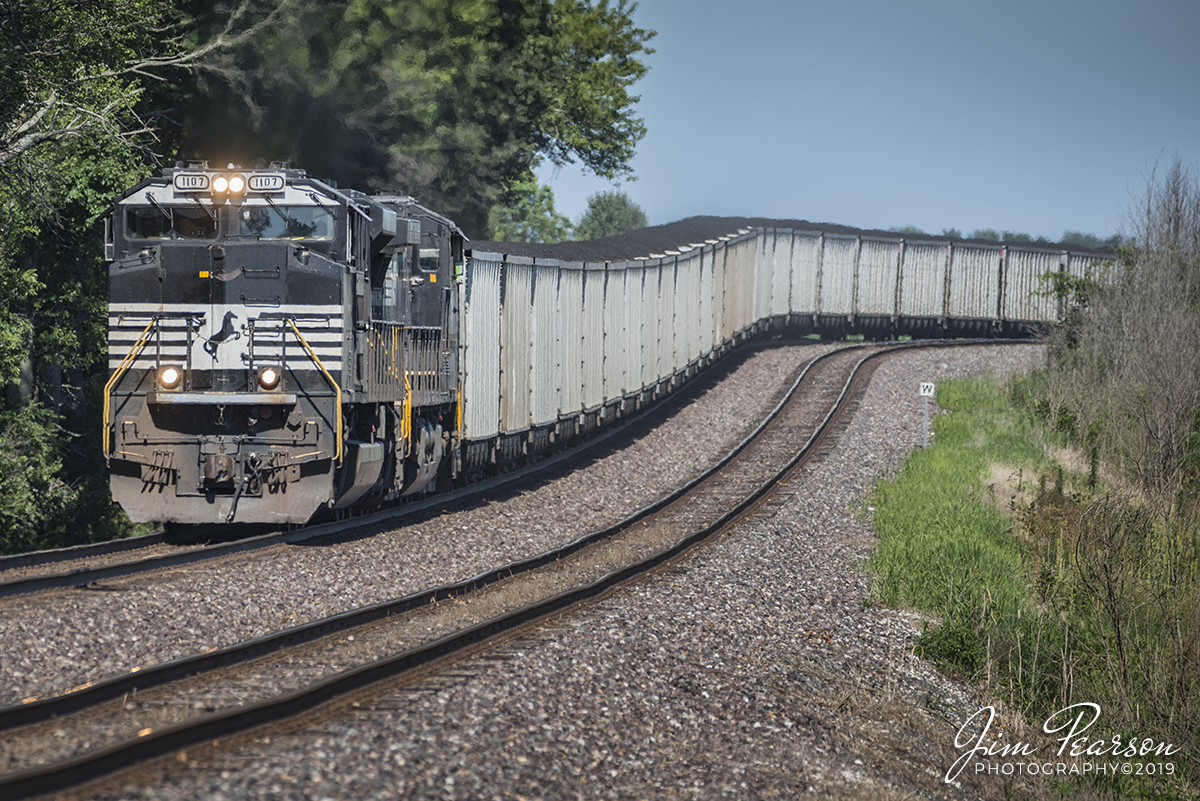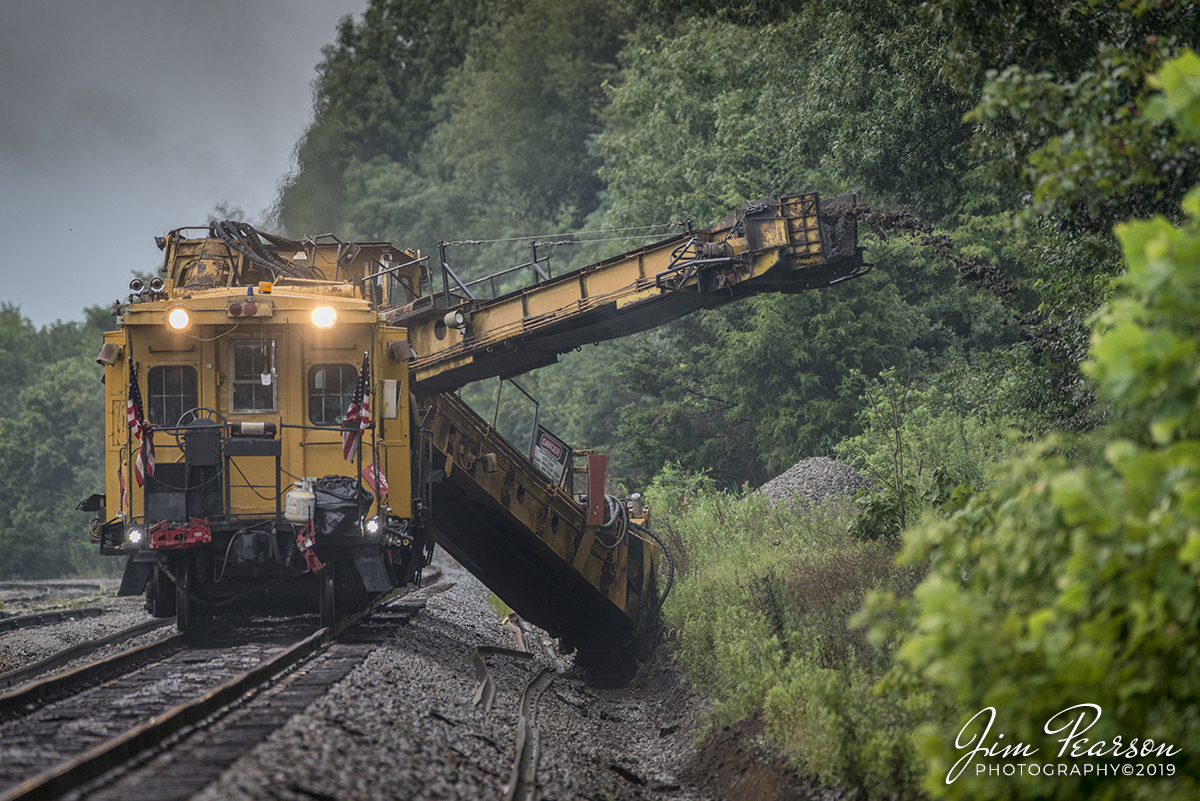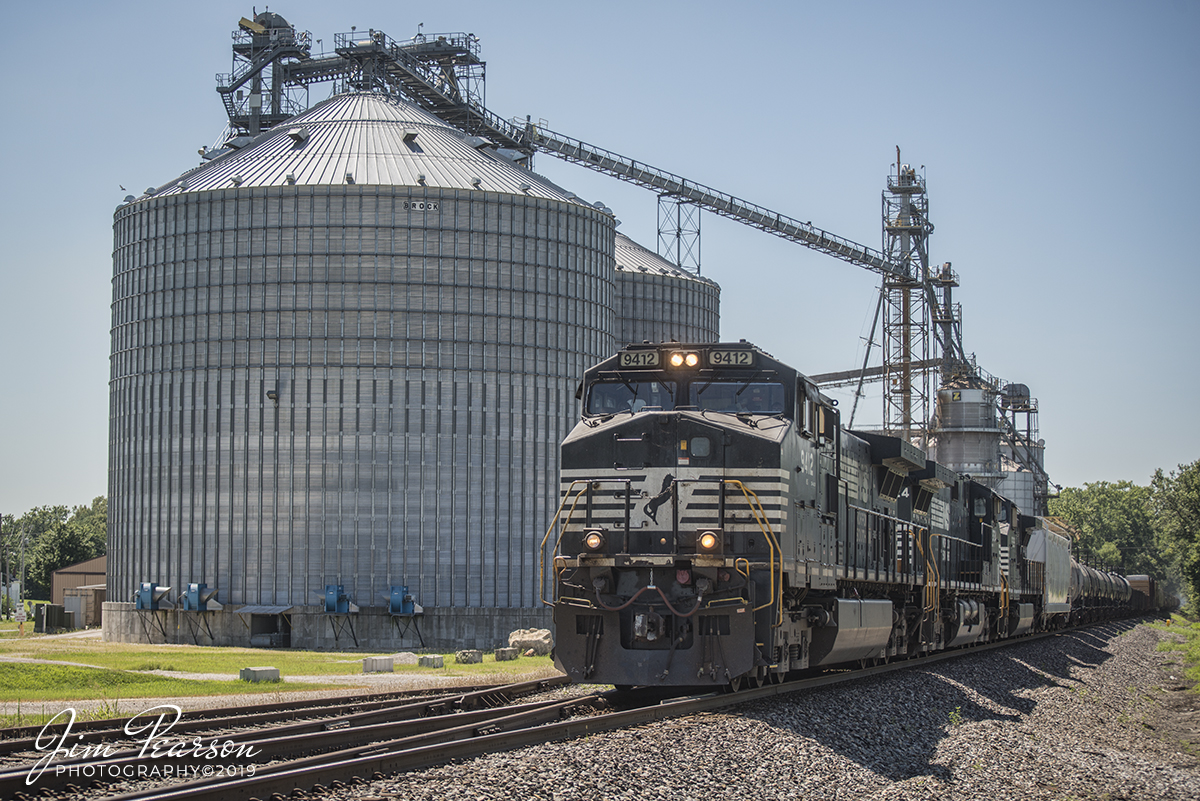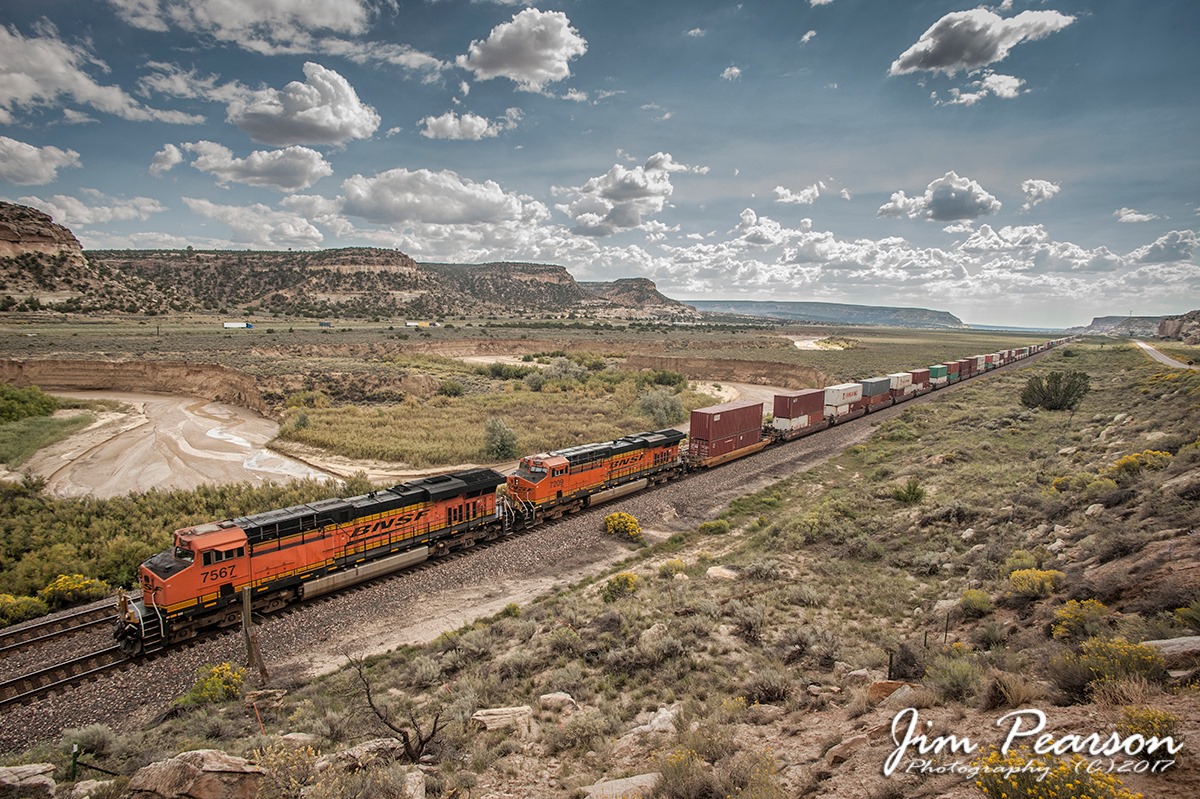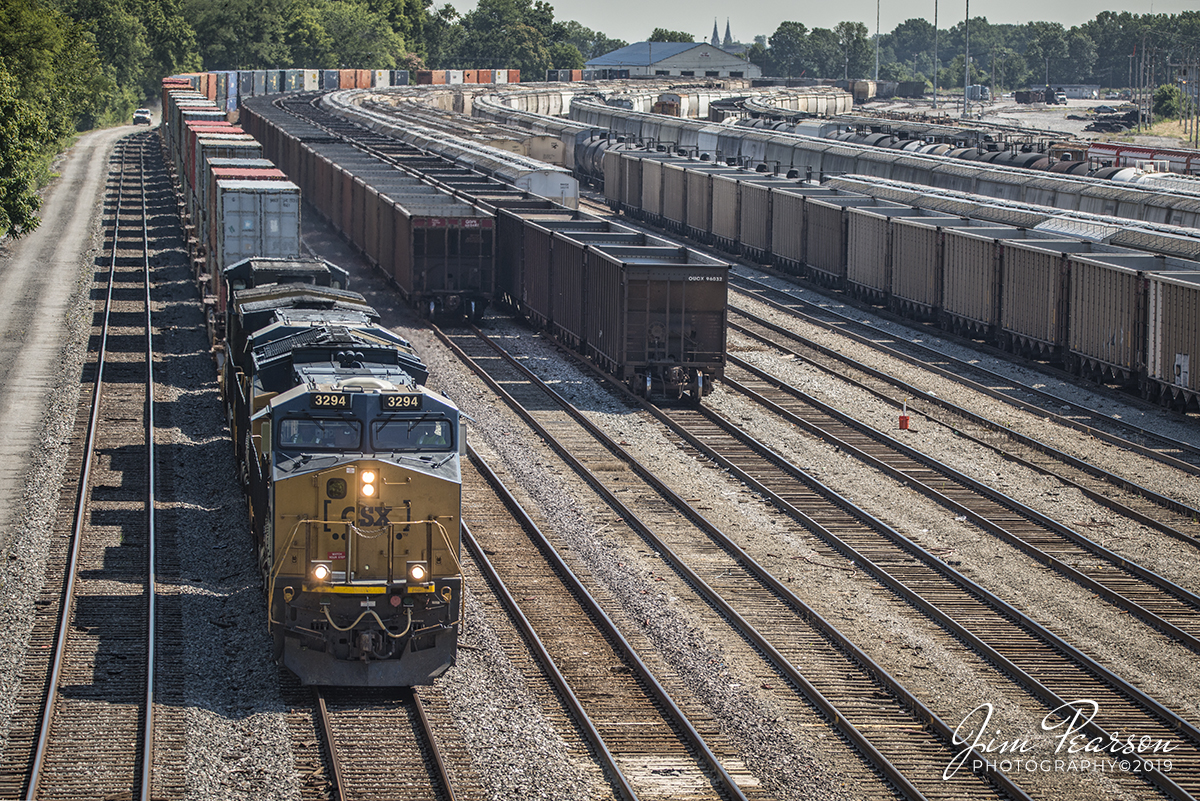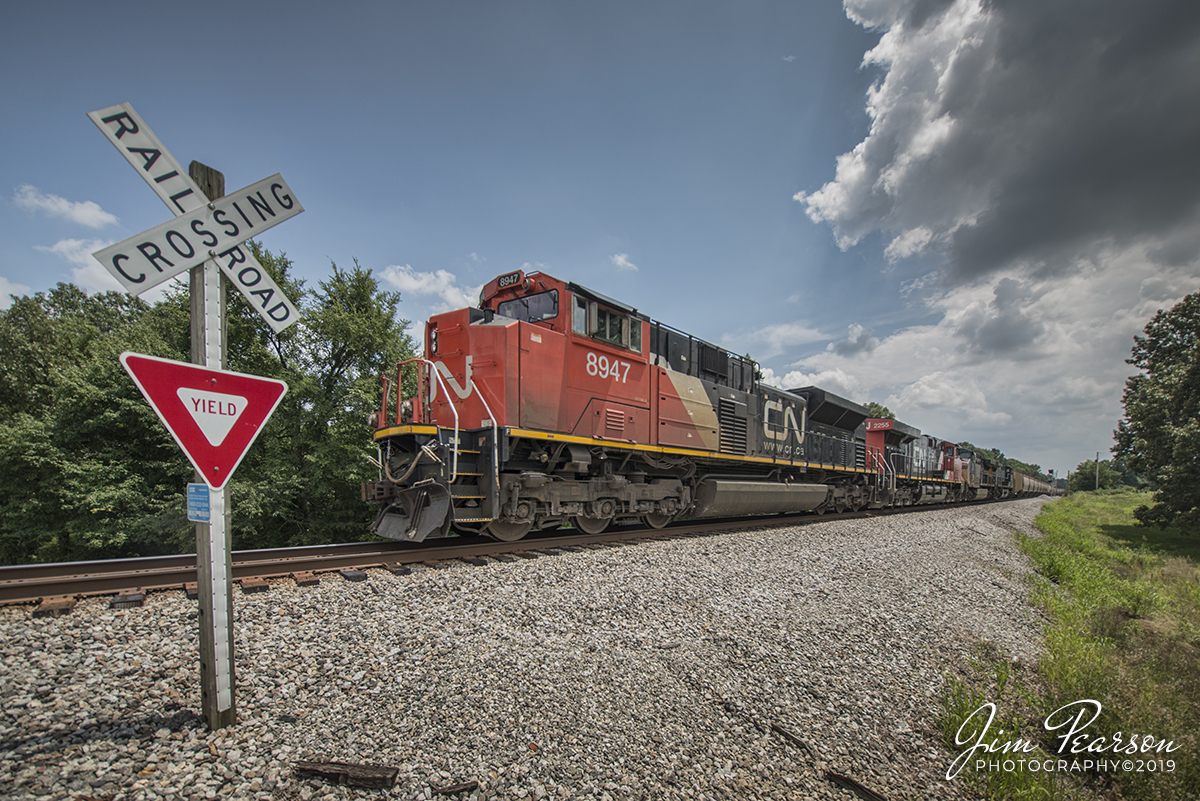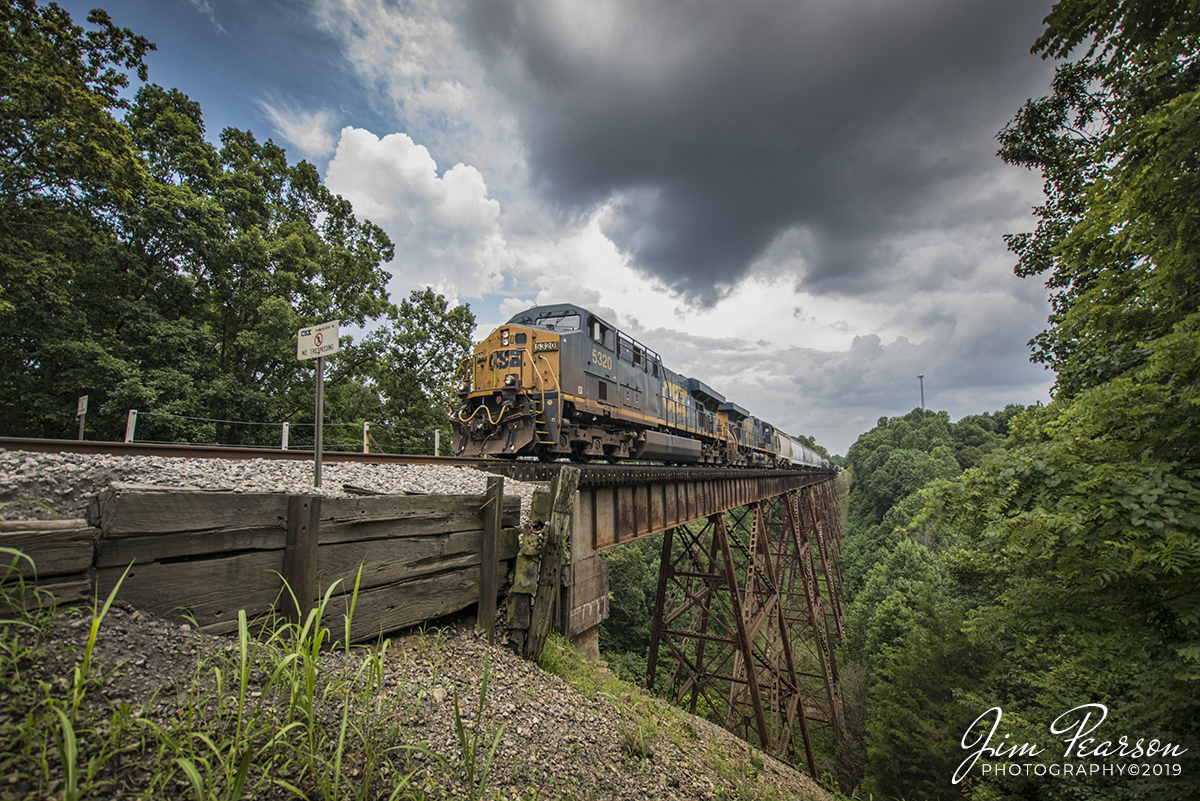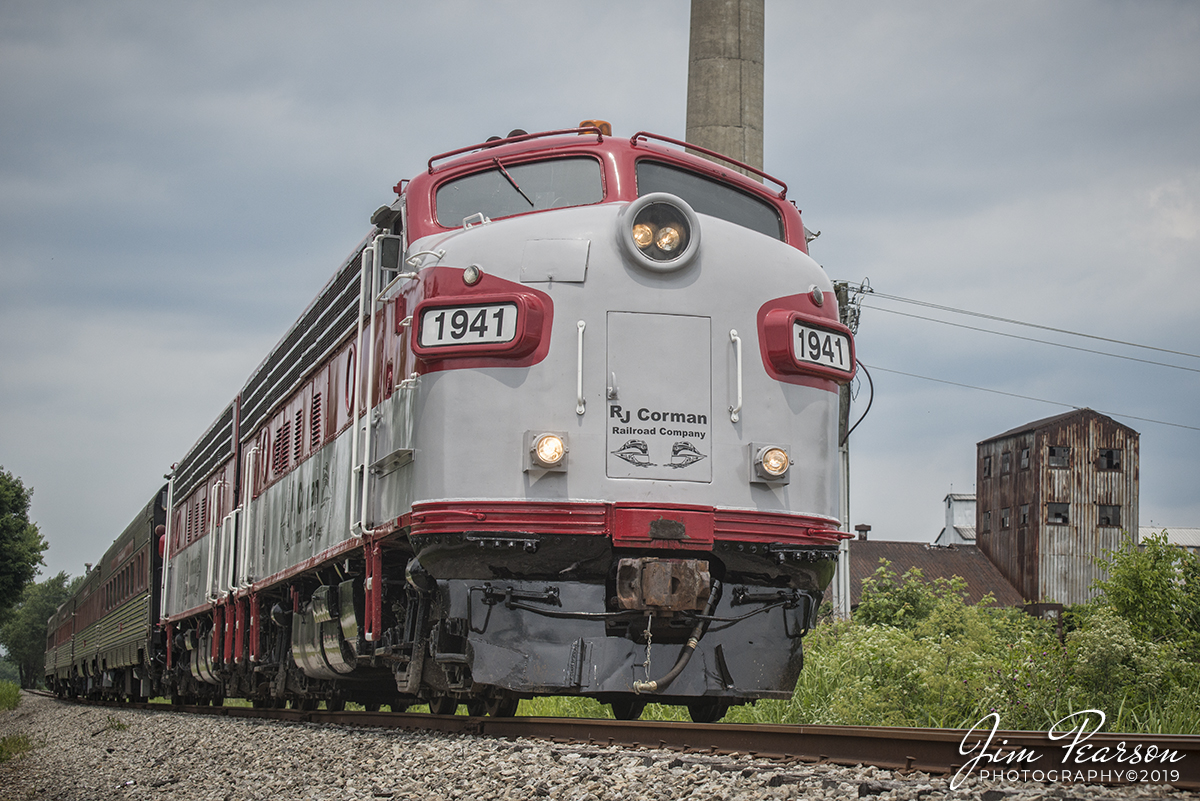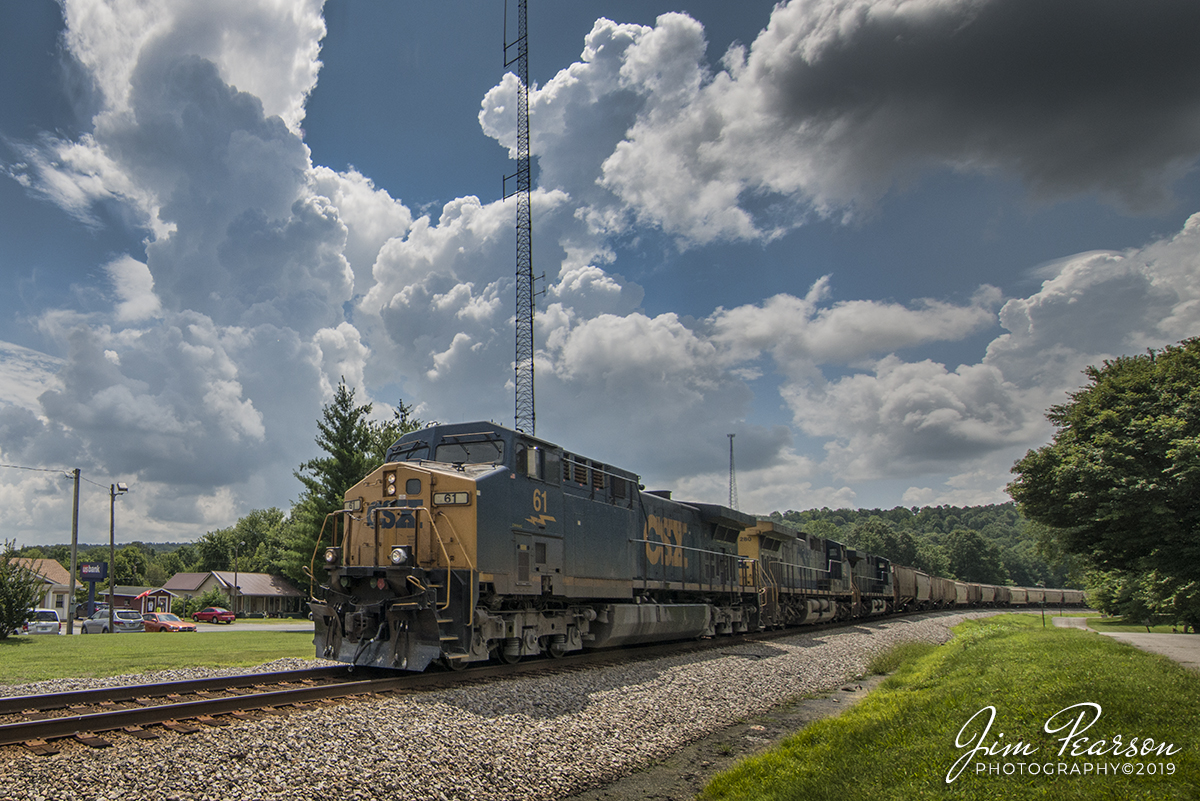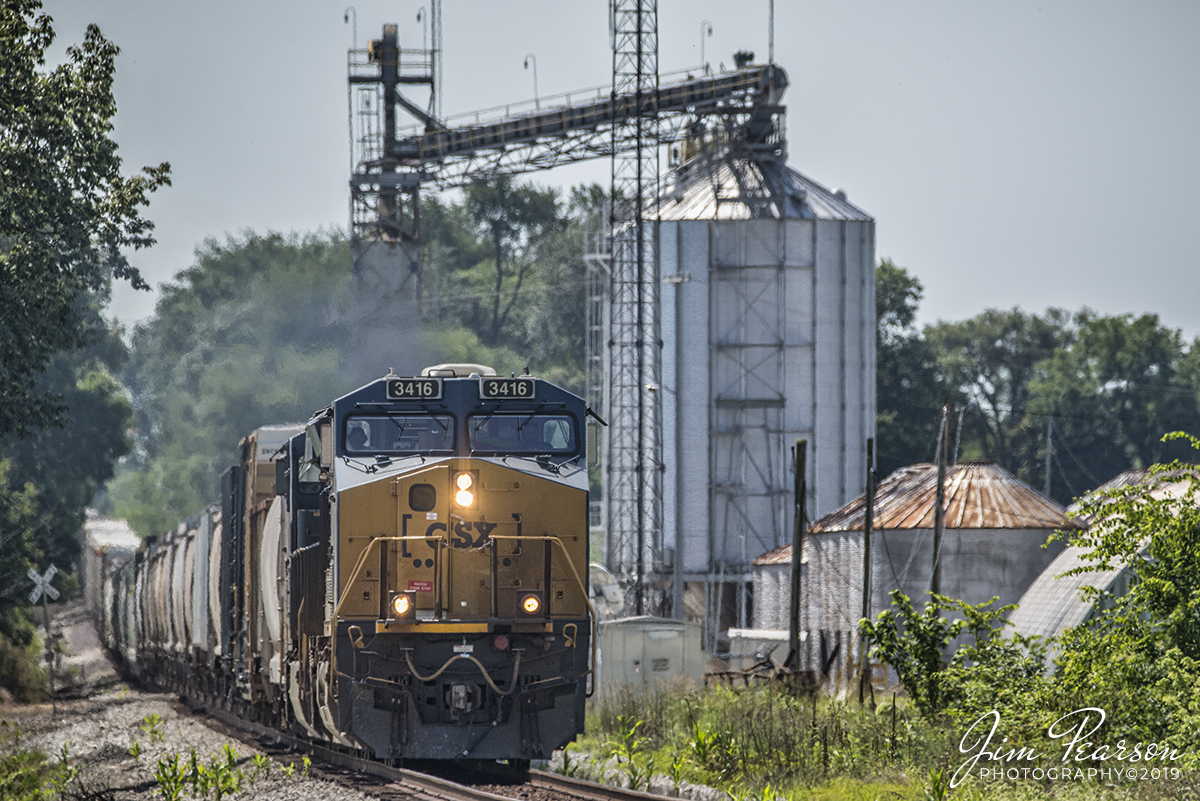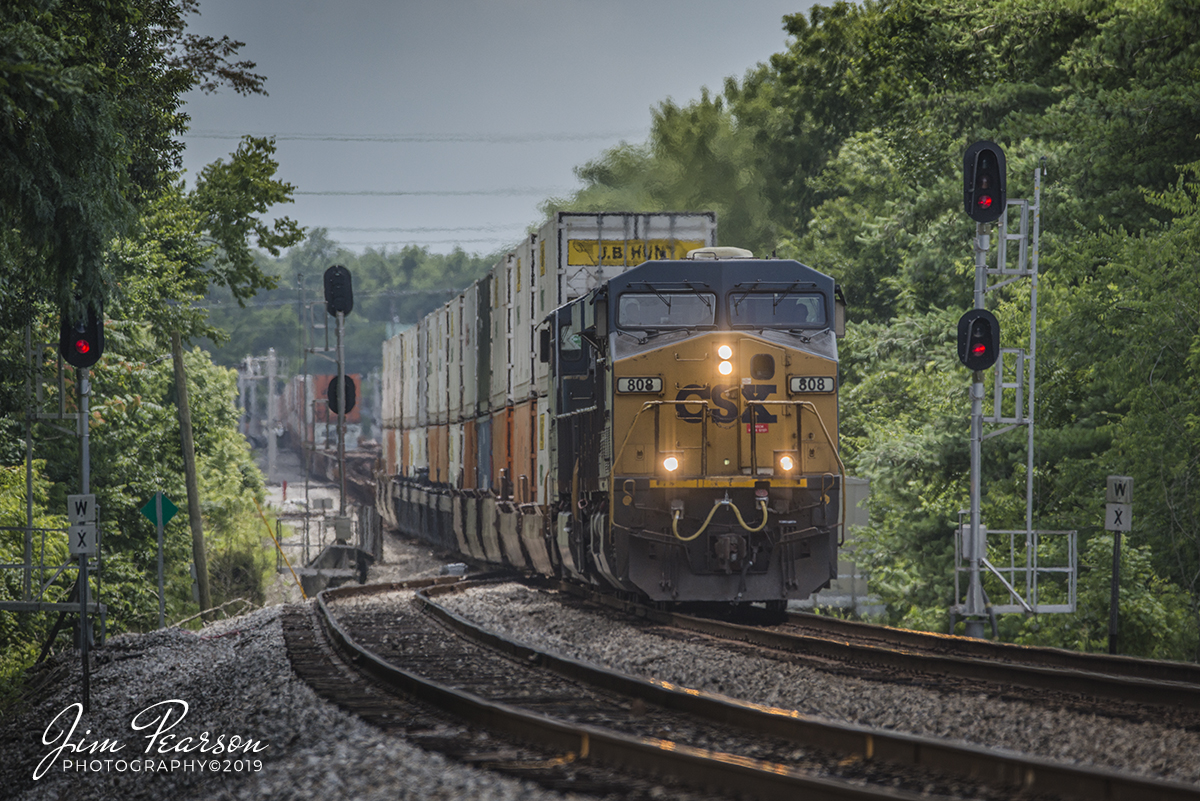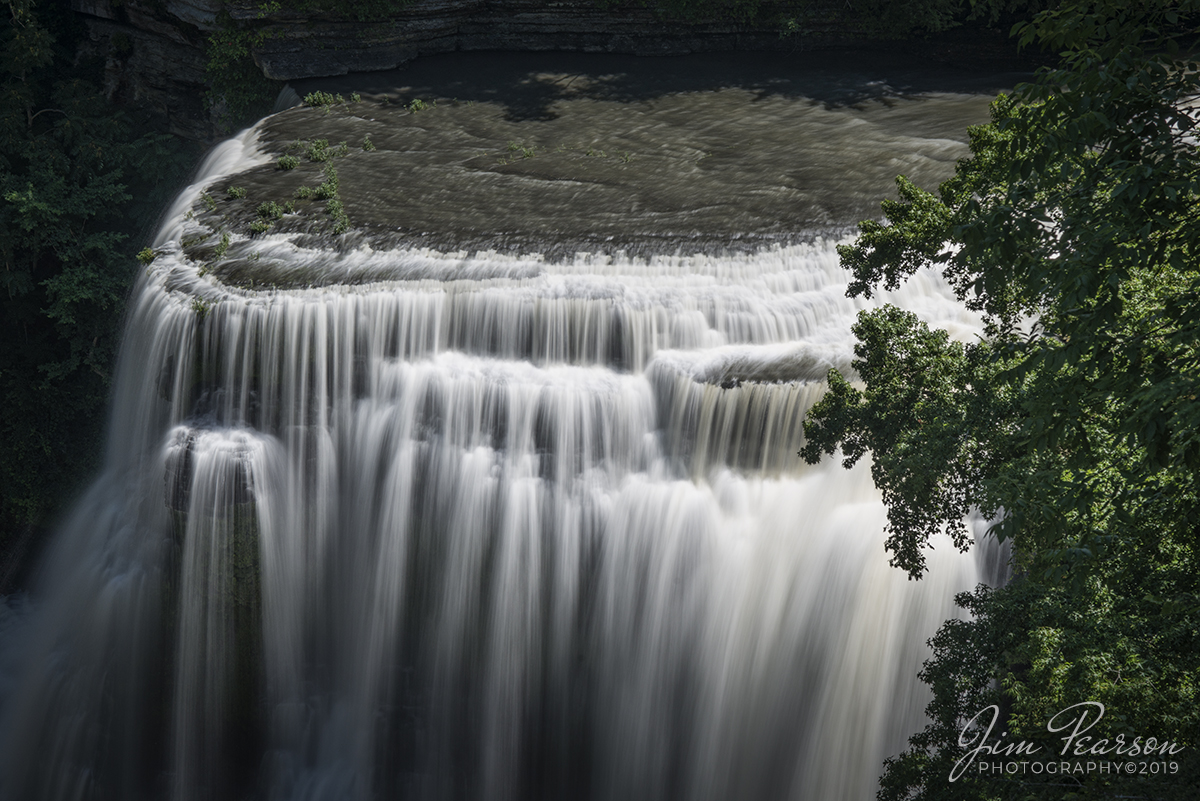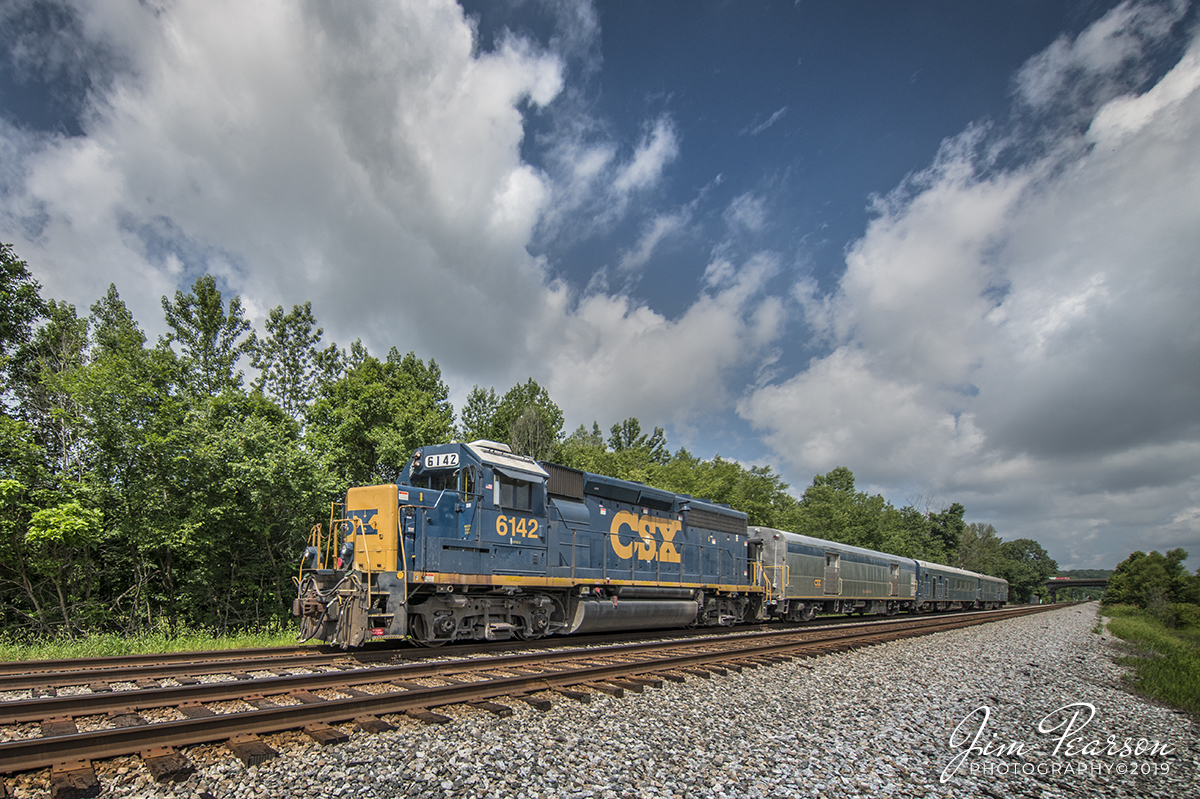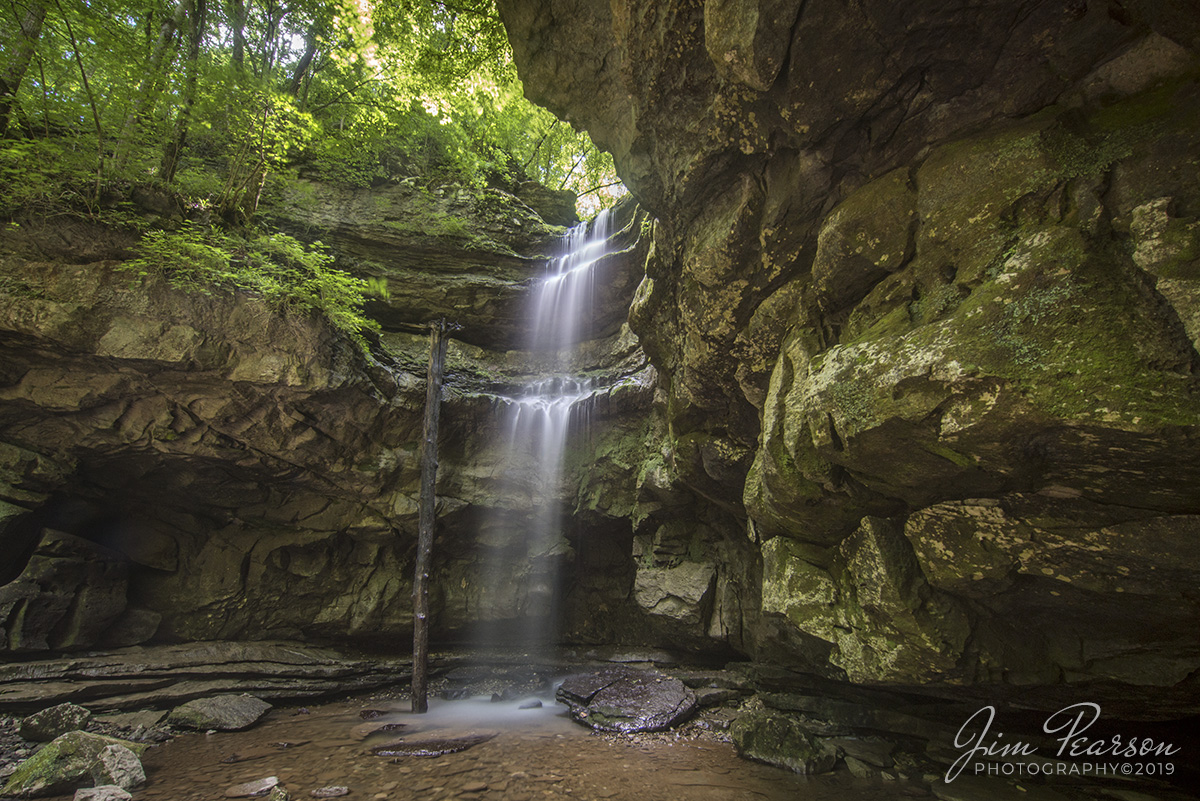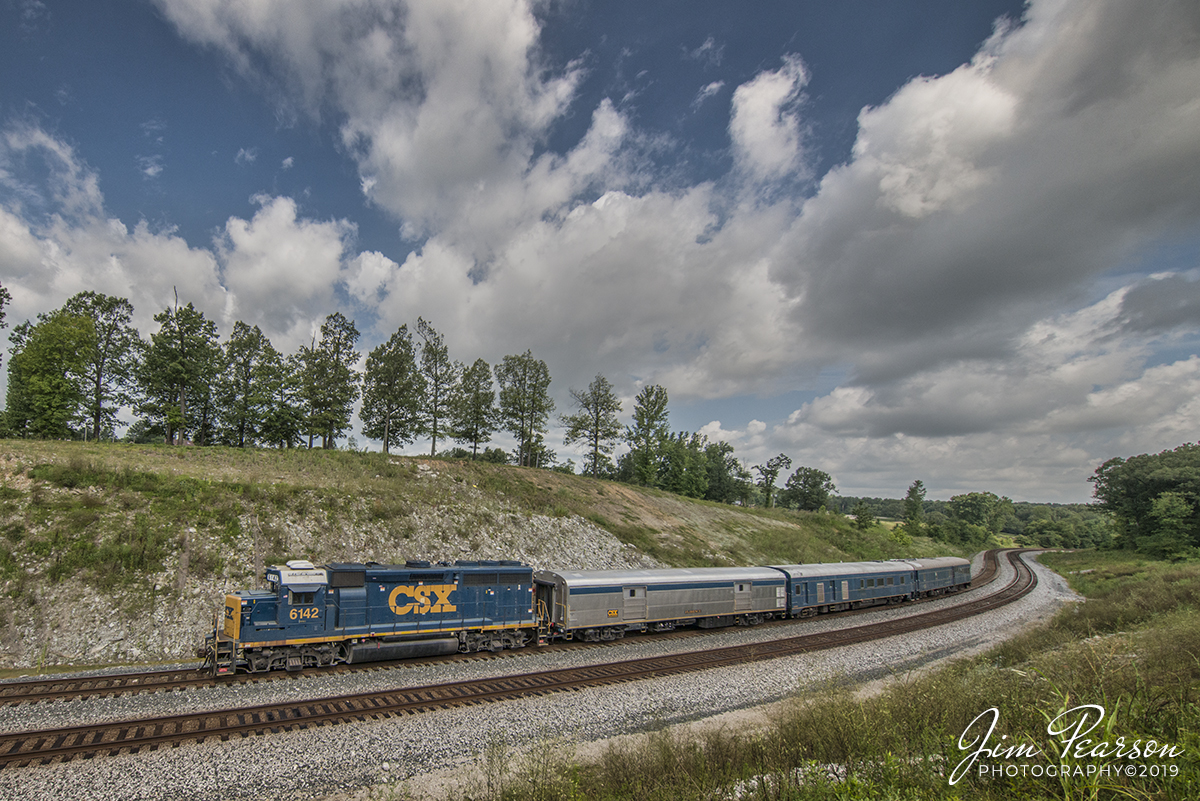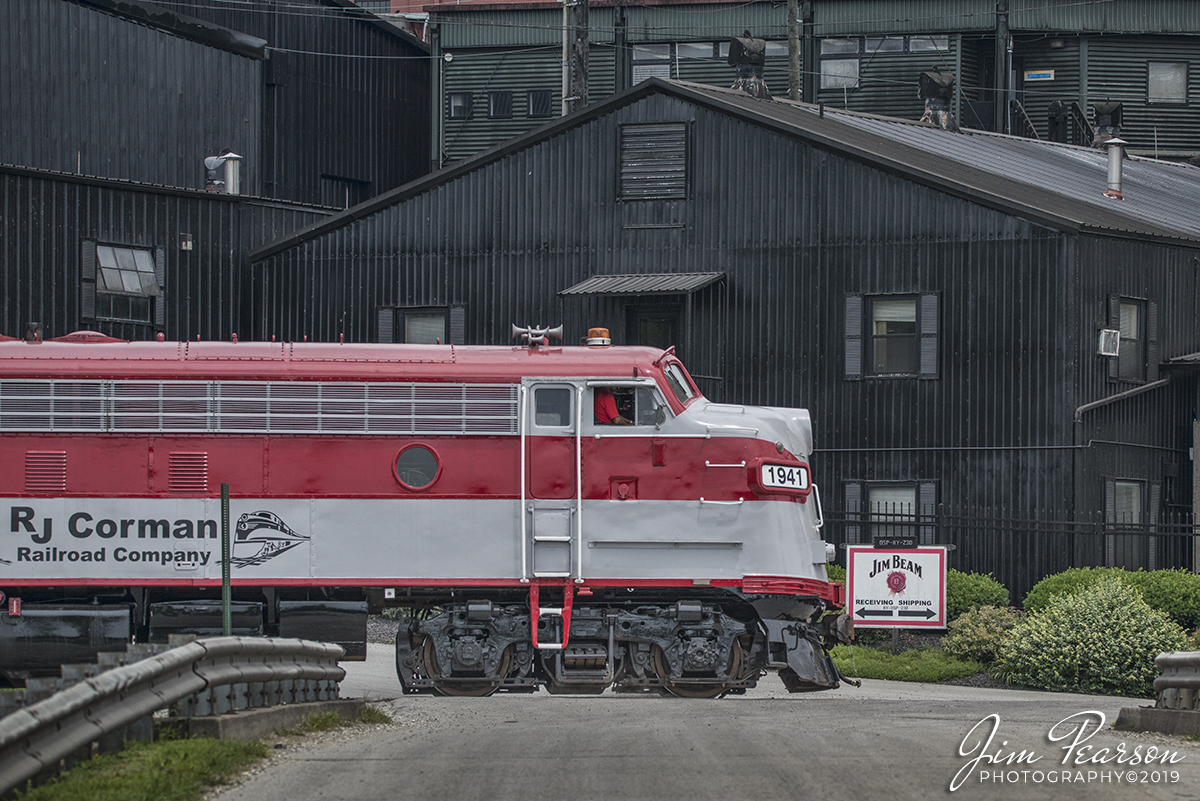July 13, 2019 – Norfolk Southern 167 pulls out of the east end of the Princeton, Indiana yard at East Douglas, as it pulled up to County Road 350 where it waited for two westbounds to pass, before it continued east on the NS Southern East District.
BNSF 7726 leads a manifest train up the Cajon Pass…
September 27, 2011 – BNSF 7726 leads a manifest train up the Cajon Pass as the sun dips low in the sky on its way east on the Cajon Subdivision, just below the famous Hill 582, below the Cajon Summit in southern California.
Norfolk Southern 9073 leads train 275 through CB Junction…
July 13, 2019 – Norfolk Southern 9073 leads train 275 through CB Junction as it heads east at Mt. Carmel, Illinois with an autorack train at milepost 150.1 on the NS Southern West District.
CSXT 3091 and 3088 lead a loaded grain train…
July 9, 2019 – CSXT 3091 and 3088 lead a loaded grain train through the Center Street crossing in downtown Madisonville, Ky as it heads south on the Henderson Subdivision, on a beautiful summer afternoon.
CSXT 226 leads CSX W222-10…
July 10, 2019 – CSXT 226 leads CSX W222-10 as it splits the signals at Mortons Junction as it pulls north on the Henderson Subdivision at Mortons Gap, Kentucky.
Norfolk Southern loaded coal train 71T…
July 13, 2019 – Norfolk Southern loaded coal train 71T snakes its way down the grade at East Douglas on the NS Southern-East District at Princeton, Indiana as it heads for Duke Energy at Mt. Carmel, Illinois.
LoRam Badger Ditching machine, DC-2…
July 15, 2019 – LoRam Badger Ditching machine, DC-2, works along the power siding at the south end of CSX’s Atkinson Yard at Madisonville, Kentucky, as it works its way north on the Henderson Subdivision.
According to the Loram website: The Badger Ditcher is a self-propelled ditch cleaner that is capable of moving 1,000 tons of material every hour, excavating at up to 22 feet from the center of the track. The Loram ditch cleaner creates a properly sloped ditch that intercepts and diverts water away from the track. The ditchers high-speed, high-performance ditching wheel digs in and picks up mud and water. As the wheel digs the ditch, water begins to flow.
The Badger Ditcher helps manage, remedy and prevent the damaging effects from a host of penetrating water sources, including direct precipitation, groundwater migration, springs and trapped water, saturation and seepage. Ditch maintenance best practices using the Badger Ditcher lets railroads improve vital drainage for the subgrade, lower the water table, control run-off and promote free flow from the ballast section that can extend the effective duration of undercutting and ballast cleaning cycles.
NS 167, led by NS 9412, passes Consolidated Grain and Barge Company…
July 13, 2019 – NS 167, led by NS 9412, passes Consolidated Grain and Barge Company at Lyles Station, MP 157, as it heads east on the NS Southern West District at Lyles Station, Indiana.
According to Wikipedia, Lyles or Lyles Station is an unincorporated community in Patoka Township, Gibson County, Indiana. The community dates from 1849, although its early settlers first arrived in the 1830s, and it was formally named Lyles Station in 1886 to honor Joshua Lyles, a free African American who migrated with his family from Tennessee to Indiana around 1837. Lyles Station is one of Indiana’s early black rural settlements and the only one remaining.
The rural settlement reached its peak in the years between 1880 and 1912, when major structures in the community included the railroad depot, a post office, a lumber mill, two general stores, two churches, and a school. By the turn of the twentieth century,
Lyles Station had fifty-five homes, with a population of more than 800 people. The farming community never fully recovered from the Great Flood of 1913, which destroyed much of the town. Most of its residents left for economic reasons, seeking opportunities for higher paying jobs and additional education in larger cities.
By 1997 approximately fifteen families remained at Lyles Station, nearly all of them descended from the original settlers.
BNSF 7567 and 7209 at the Continental Divide…
September 25, 2011 – BNSF 7567 and 7209 lead a long intermodal freight, elephant style, as they head east through Campbell Pass at the Continental Divide, New Mexico.
CSXT 3294 leads Q025-13 as it heads…
July 13, 2019 – CSXT 3294 leads Q025-13 as it heads through the south end of CSX’s Howell Yard, on its way south along the Henderson Subdivision.
Canadian National 8947 and 2255 lead CSX V257-09…
July 10, 2019 – Canadian National 8947 and 2255 lead CSX V257-09 and two other CSXT units as they approach the road crossing just north of Gum Lick Trestle, hauling a mixed load of empty grain and ethanol cars as it heads north on the Henderson Subdivision.
CSX local J732-10 passes over the Gum Lick Trestle…
July 10, 2019 – CSX local J732-10 passes over the Gum Lick Trestle, north of Kelly, Ky, as it heads north on the Henderson Subdivision to Atkinson Yard in Madisonville, Ky.
RJ Corman’s (RJC) My Old Kentucky Dinner…
June 15, 2019 – RJ Corman’s (RJC) My Old Kentucky Dinner Train with FP7A # 1941 leading passes the old T.W.Samuels Bourbon buildings, on the RJC Bardstown Line at Deatsville, Kentucky, in this low angle shot, as heads back to Bardstown with its train.
CSXT 61 leads a empty grain train south…
July 3, 2019 – CSXT 61 leads a empty grain train south through Mortons Gap, Ky on the Henderson Subdivision.
CSXT 3416 leads Q512-06…
July 6, 2019 – CSXT 3416 leads Q512-06 as it passes the grainery between Adams, TN and Guthrie, Ky on it’s way north on the Henderson Subdivision.
CSXT 808 heads up Q028-06 as it leads…
July 6, 2019 – CSXT 808 heads up Q028-06 as it leads an intermodal over the south switch at Latham Siding at Hopkinsville, Ky as it heads south on the Henderson Subdivision with its load.
Burgess Falls State Park…
June 27, 2019 – Burgess Falls State Park is a state park and state natural area in Putnam County and White County, Tennessee. According to Wikipedia: Burgess Falls State Park is a state park and state natural area in Putnam County and White County, Tennessee, located in the southeastern United States. The park is situated around a steep gorge in which the Falling Water River drops 250 feet (76 m) in elevation in less than a mile, culminating in a 136-foot (41 m) cataract waterfall.
CSX W001-03 Track Inspection Geometry Train…
July 3, 2019 – CSX W001-03 Track Inspection Geometry Train heads south on the Henderson Subdivision at Oak Hiil, between Nortonville, and Mortons Gap, Kentucky with the Florence, Columbus and a Track Geometry Car.
According to Wikipedia: A track geometry car (also known as a track recording car) is an automated track inspection vehicle on a rail transport system used to test several geometric parameters of the track without obstructing normal railroad operations.
Some of the parameters generally measured include position, curvature, alignment of the track, smoothness, and the crosslevel of the two rails. The cars use a variety of sensors, measuring systems, and data management systems to create a profile of the track being inspected.
Lost Creek Falls…
June 27, 2019 – Lost Creek Falls, outside of Sparta, Tennessee.
CSX W001-03 Track Inspection Geometry Train…
July 3, 2019 – CSX W001-03 Track Inspection Geometry Train heads south on the Henderson Subdivision at Nortonville, Kentucky with the Florence, Columbus and a Track Geometry Car.
According to Wikipedia: A track geometry car (also known as a track recording car) is an automated track inspection vehicle on a rail transport system used to test several geometric parameters of the track without obstructing normal railroad operations. Some of the parameters generally measured include position, curvature, alignment of the track, smoothness, and the crosslevel of the two rails.
The cars use a variety of sensors, measuring systems, and data management systems to create a profile of the track being inspected.
My Old Kentucky Dinner Train at the Jim Beam Distillery…
June 15, 2019 – RJ Corman’s (RJC) My Old Kentucky Dinner Train with FP7A 1941 leading the way, heads back toward Bardstown, as it passes through the crossing at the Jim Beam Distillery, on the RJC Bardstown Line at Shepherdsville, Kentucky.

